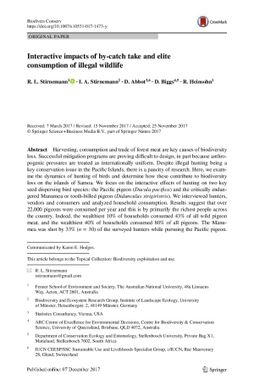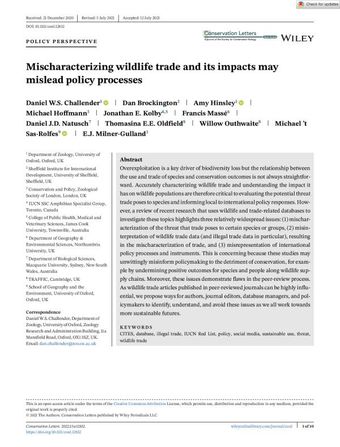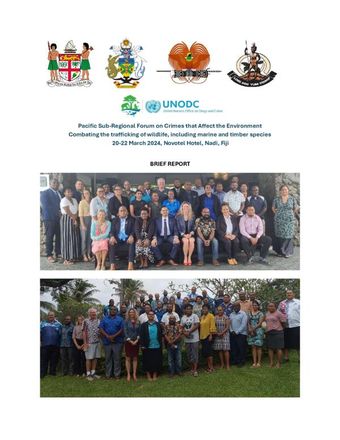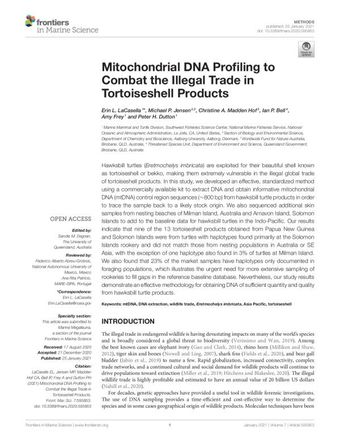Interactive impacts of by-catch take and elite consumption of illegal wildlife
- Description:
- Harvesting, consumption and trade of forest meat are key causes of biodiversity loss. Successful mitigation programs are proving difcult to design, in part because anthropogenic pressures are treated as internationally uniform. Despite illegal hunting being a key conservation issue in the Pacifc Islands, there is a paucity of research. Here, we examine the dynamics of hunting of birds and determine how these contribute to biodiversity loss on the islands of Samoa. We focus on the interactive efects of hunting on two key seed dispersing bird species: the Pacifc pigeon (Ducula pacifca) and the critically endangered Manumea or tooth-billed pigeon (Didunculus strigiristris). We interviewed hunters, vendors and consumers and analyzed household consumption. Results suggest that over 22,000 pigeons were consumed per year and this is by primarily the richest people across the country. Indeed, the wealthiest 10% of households consumed 43% of all wild pigeon meat, and the wealthiest 40% of households consumed 80% of all pigeons. The Manumea was shot by 33% (n = 30) of the surveyed hunters while pursuing the Pacifc pigeon.
- Display date:
- 2017
- Collections:
- Secretariat of the Pacific Regional Environment Programme (SPREP)
- Publisher:
- Topical Collection: Biodiversity exploitation and use
- Content partner:
- Secretariat of the Pacific Regional Environment Programme (SPREP)
- Availability:
- Not specified
-
Copyright status: All rights reservedFind out more about what you are able to do with this itemThis item is all rights reserved, with means you'll have to get permission from Secretariat of the Pacific Regional Environment Programme (SPREP) before using it. For more information, please see our use and reuse page.What can I do with this item?Non-infringing useNZ copyright law does not prevent every use of a copyright work, and this item may be hosted by an international institute or organisation. You should consider what you can and cannot do with a copyright work.No sharingYou may not copy and/or share this item with others without further permission. This includes posting it on your blog, using it in a presentation, or any other public use.No modifyingYou are not allowed to adapt or remix this item into any other works.No commercial useYou may not use this item commercially.
Related items
Welcome and warm Pasifik greetings
The information on this site has been gathered from our content partners.
The names, terms, and labels that we present on the site may contain images or voices of deceased persons and may also reflect the bias, norms, and perspective of the period of time in which they were created. We accept that these may not be appropriate today.
If you have any concerns or questions about an item, please contact us.



